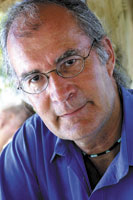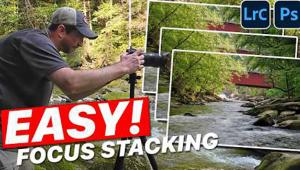The Wedding Photography Craft
More pro photographers than you might imagine have been forged by the fire of the wedding photography trade. There is little to compare with the challenges of that combination of business and shooting knowledge and skill required. A typical wedding day can include portraits, still life, posing, lighting, exposure, photojournalism, classic groups, action, low-light, night, and even candle-lit shooting, all within the space of a few hours among people who in some cases become progressively senseless as the affair moves along.
 A wedding photographer and his or her business must be able to prepare and make a presentation to book the event, collect money and handle contracts, ensure that images are safe and delivered on time, watch over the preparation of albums and large-scale prints, follow up with delivery and collections, and do it all with good cheer and enthusiasm.
A wedding photographer and his or her business must be able to prepare and make a presentation to book the event, collect money and handle contracts, ensure that images are safe and delivered on time, watch over the preparation of albums and large-scale prints, follow up with delivery and collections, and do it all with good cheer and enthusiasm.
In short, if you can make it there you can make it anywhere, and although many photographers, including yours truly, cut their teeth on the wedding trade in order to build up equipment and move along, others have turned their craft into an art and their freelance or assistant’s work into a full-time business.
Wedding styles and approaches have changed over the years, and many see the coverage as being more of an event than a series of well-posed images. The styles have evolved into two “camps,” one being the so-called “photojournalistic” and the other being the so-called “classical” approach. I am sure that most weddings turn out to be a combination of the two, as somewhere during the event the bride and groom tend to lapse into wanting images they saw in their parents’ albums of posed groups, including what we used to call “inventorying the crowd,” or the classic table shots.
Wedding shooters have their battle scars, and gather a few together, and you’ll soon hear tales of too-nervous brides, the inevitable drunk uncle with his Leica, out-of-control fires on the Viennese coffee table, battling families whose son/daughter are simply too good for their intended, and, for me, the groom who somehow hated photographers (or the whole idea of getting married) and who squinted his eyes shut for every shot I was trying to take.
You really do have to take your hat off to everyone involved in this business, whether it is a full-time operation or that of being a weekend warrior. While the pressure to deliver and to make every shot count can be enormous, there is also a great deal of satisfaction about being involved in one of the most important days of people’s lives. Being able to photograph in those intimate moments is in some way a privilege, as if someone invited you into their home with your camera.
In this issue we look at some of the aspects of this craft, as well as some of the latest software advances that have become an essential tool of the trade. We also are taking a good look at the business of being a photographic assistant, with insider tips from some of the best and the brightest in that business. Just as many photographers started out in the wedding trade, assisting is a very important path, or even a career goal in itself, that trains you for every aspect of making money with your camera, and your sense of what it takes to run a photographic business.

 A wedding photographer and his or her business must be able to prepare and make a presentation to book the event, collect money and handle contracts, ensure that images are safe and delivered on time, watch over the preparation of albums and large-scale prints, follow up with delivery and collections, and do it all with good cheer and enthusiasm.
A wedding photographer and his or her business must be able to prepare and make a presentation to book the event, collect money and handle contracts, ensure that images are safe and delivered on time, watch over the preparation of albums and large-scale prints, follow up with delivery and collections, and do it all with good cheer and enthusiasm.In short, if you can make it there you can make it anywhere, and although many photographers, including yours truly, cut their teeth on the wedding trade in order to build up equipment and move along, others have turned their craft into an art and their freelance or assistant’s work into a full-time business.
Wedding styles and approaches have changed over the years, and many see the coverage as being more of an event than a series of well-posed images. The styles have evolved into two “camps,” one being the so-called “photojournalistic” and the other being the so-called “classical” approach. I am sure that most weddings turn out to be a combination of the two, as somewhere during the event the bride and groom tend to lapse into wanting images they saw in their parents’ albums of posed groups, including what we used to call “inventorying the crowd,” or the classic table shots.
Wedding shooters have their battle scars, and gather a few together, and you’ll soon hear tales of too-nervous brides, the inevitable drunk uncle with his Leica, out-of-control fires on the Viennese coffee table, battling families whose son/daughter are simply too good for their intended, and, for me, the groom who somehow hated photographers (or the whole idea of getting married) and who squinted his eyes shut for every shot I was trying to take.
You really do have to take your hat off to everyone involved in this business, whether it is a full-time operation or that of being a weekend warrior. While the pressure to deliver and to make every shot count can be enormous, there is also a great deal of satisfaction about being involved in one of the most important days of people’s lives. Being able to photograph in those intimate moments is in some way a privilege, as if someone invited you into their home with your camera.
In this issue we look at some of the aspects of this craft, as well as some of the latest software advances that have become an essential tool of the trade. We also are taking a good look at the business of being a photographic assistant, with insider tips from some of the best and the brightest in that business. Just as many photographers started out in the wedding trade, assisting is a very important path, or even a career goal in itself, that trains you for every aspect of making money with your camera, and your sense of what it takes to run a photographic business.


































